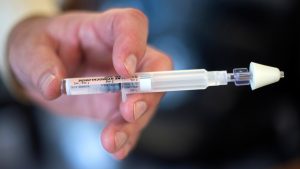 Naloxone has been on the market since 1971. That’s pretty remarkable when you consider that it really has only gained in public awareness over the past few years. Of course, the only reason we are more aware of it, these days, is because the drug is an emergency opioid overdose intervention and, unfortunately, there has been an increased need for it.
Naloxone has been on the market since 1971. That’s pretty remarkable when you consider that it really has only gained in public awareness over the past few years. Of course, the only reason we are more aware of it, these days, is because the drug is an emergency opioid overdose intervention and, unfortunately, there has been an increased need for it.
Indeed, emergency medical response teams carry Naloxone, and are trained to administer it when responding to an opioid overdose. The drug works by blocking the opioid receptors in the brain, saving precious time for first responders to rush the patient to the hospital for treatment.
Pharmaceutical company Kaleo manufactures the only Naloxone auto-injector device, which they call Evzio. It was first approved for the US market in 2014, and it hit the market with a list price of $575 (for a pack of two). This is very similar, of course, to the way that another auto-injector intervention is packaged and marketed: Mylan’s EpiPen.
The new list price is $4,500. For those who do not wish to do the math: that is an increase of 680 percent.
Prepared to respond to such a move, Kaleo vice president of corporate affairs, Mark Herzog comments, “When setting the ‘list’ price for products, kaléo always starts with the needs of the patient first and then engages with multiple stakeholders in the healthcare system. Following these discussions, in order to help ensure our product is available as an option to most patients for $0 out-of-pocket, we set the list price at $4500.”
Now, the rationale does make sense, in a way, because this is a product whose primary market is probably not the direct consumer (but, rather, law enforcement and emergency medical assistance). As such, they need to set a price which mitigates the costs versus the potential of a low return. At the same time, though, there is so much more going on here than just opiate abuse. Drug prices across the industry continue to rise, and a time when consumers are less and less able to cover the costs.
